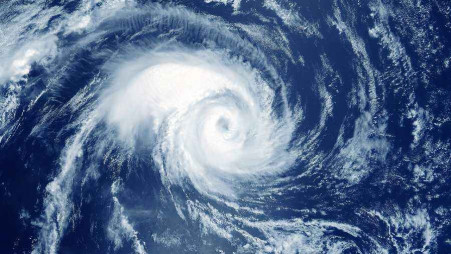News Highlight
Cyclone Sitrang that lashed Bangladesh left at least 24 people dead and about 8 million without power across the delta nation.
Key Takeaway
- Cyclone Sitrang formed in the Bay of Bengal before turning north toward Bangladesh’s vast coast.
- The storm weakened on Tuesday afternoon, with maximum sustained wind speeds of 65 Kilometres per hour (kmph) and wind gusts up to 85 kmph.
Cyclones
- What?
- A cyclone is a large air mass that rotates around an intense centre of low atmospheric pressure, counterclockwise in the Northern Hemisphere and clockwise in the Southern Hemisphere.
- How Are Cyclones Formed?
- Warm, moist air over the ocean rises due to less density. This air rises up and away from the ocean surface, leaving less air near the surface, creating a low-pressure zone.
- Due to the surrounding high-pressure areas, air flows into this low-pressure area and eventually warms up, forming a cycle.
- Now, this cycle makes the warm air above the ocean rise and cool the water below to generate clouds. The entire cloud and wind system spins and grows with the constant heating and evaporating process.
- With more speed, cyclone eye formation takes place in the centre. This zone signifies the lowest air pressure and is calm and clear. The high-pressure air from above flows down into this region.
- Classification
- Cyclones are classified as extratropical cyclones (also called temperate cyclones); and tropical cyclones.
- Tropical Cyclones
- The term ‘Tropical Cyclone’ is used by the World Meteorological Organisation to describe weather systems with winds greater than ‘Gale Force’ (minimum of 63 km per hour).
- A tropical cyclone is an intense circular storm that originates over warm tropical oceans and is characterised by low atmospheric pressure, high winds, and heavy rain.
- These cyclones are one of the world’s most destructive natural disasters.
- Extratropical Cyclones
- Mid-latitude depressions, temperate cyclones, frontal depressions, and wave cyclones are all names for extratropical cyclones.
- In both hemispheres, these are active above the mid-latitudinal zone between 35° and 65° latitude.
- The movement is from west to east, and it is most noticeable during the winter months.
- Polar and tropical air masses collide and generate fronts in these latitude zones.
- Favourable Condition for tropical cyclone
- A large area of the sea surface with a temperature above 27° C.
- The Coriolis force is present.
- The vertical wind speed varies slightly.
- A weak low-pressure area or low-level-cyclonic circulation that already existed.
- Above the sea level system, there is a higher divergence.
- Naming Process of Cyclone.
- An international committee of the World Meteorological Organisation maintains and updates cyclone lists and names (WMO).
- Six different lists are used in a rotating fashion.
- As a result, the 2020 list will be used again in 2026.
- If a country has been devastated by a storm, the names will not be mentioned again for obvious reasons.
- Katrina in the United States (2005), Sandy in the United States (2012), Haiyan in the Philippines (2013), Irma, and Maria in the Caribbean are examples (2017).
Content Source: Indian Express



